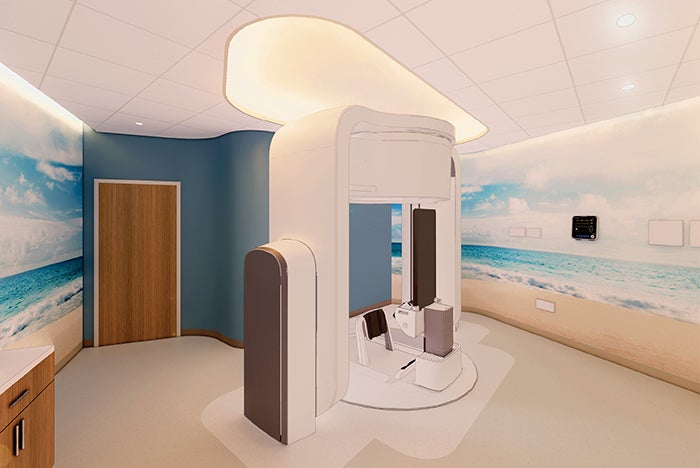New treatment technologies require adaptable design skills
One of the most challenging aspects of planning and designing new cancer treatment spaces is the rapid advancement of technology. Designing these treatment rooms is almost as complex as the treatment itself. This reality is made even more challenging by the need to design for technologies that are still in development.
Proton therapy requires an extensive amount of technology for both the setup and treatment processes. The entire system — from the patient chair and positioning system to the beam delivery nozzle and in-room imaging capabilities — is highly specialized. Very few components are available off-the-shelf, and fewer still already have Food and Drug Administration approval for treating patients. During the procedure, staff members are not allowed inside the vault, so the entire process is carried out through cameras and robotics.
In converting a single vault into two vaults, the design team in the accompanying article had to work alongside the various equipment designers, users and physicists to accommodate a beam-splitter magnet in the beam hall, which will switch the beam between two new nozzles to deliver radiation to the patients. The team also worked closely with the vendor to modify their upright chair design to fit the height of the existing beam line. Lowering the height of the chair system managed to sidestep complicated modifications to the existing concrete shielding as well as the subsequent increase in construction costs and delivery time. The team also helped modify software that was written to British standards and practices.
In addition to upright treatment chairs, emerging technologies include compact single-room cyclotrons, vertical computed tomography scanners and open-bore/upright magnetic resonance imaging systems. Currently, treatment spaces are becoming smaller to reflect the reduced footprint of new technologies, but at the same time, some spaces are growing as new technologies become available to add.
It’s important for designers to anticipate future changes for space and utility capacity. But it is more important for them to be able to understand when change is needed, implement a plan for assessing the options, select the right choice and push it forward to completion.





